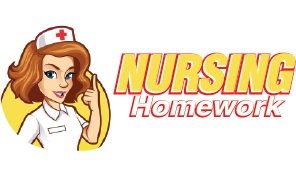
Medicine abounds with eponymous terms, particularly regarding clinical observations and diagnostic procedures. These terms often bear the names of individuals who were instrumental in their description or, in some cases, are linked to notable patients with the respective conditions. As these terms lack a direct correlation to specific diseases, memorization becomes essential. This article offers a concise exploration of prevalent eponymous terms encountered in nursing school and during clinical practice at the bedside.
| Term | Associated With | Key Things to Know |
|---|---|---|
| Allen Test | ABG analysis | Used to assess the presence of a palmar arch, ensuring hand perfusion in case of radial or ulnar artery damage. The modified Allen test involves fist-clenching, artery occlusion, and observation for blood flow restoration. |
| Babinski Reflex | Neurological injury and infants | Evaluates corticospinal tract; normal in infants up to 24 months. Abnormal presence in adults suggests brain or spinal cord injury. Testing involves running a blunt instrument along the plantar surface, noting fanning of toes or upward movement of the first toe. |
| Barlow Maneuver | Developmental dysplasia of the hip | Tests for hip dislocation or subluxation in infants. Involves hip flexion, thigh adduction without downward pressure, and palpation for femur movement or “thunk.” Positive result indicates developmental dysplasia of the hip and is often performed with the Ortolani maneuver. |
| Battle’s Sign | Neurological injury | Indicates head trauma (blunt head trauma) with bruising over the mastoid process. Positive predictive value for basilar skull fracture exceeds 75%. Studies suggest it may also occur with hepatic encephalopathy without traumatic head injury. |
| Beck’s Triad | Cardiac tamponade | Consists of hypotension, jugular vein distension, and muffled heart sounds. Associated with cardiac tamponade. |
| Biot’s Respirations | Neurological injury | Irregular breathing pattern with rhythmic periods of apnea lasting 10 to 30 seconds. Generally due to neurological injury; may also be present with opioid use. |
| Broca’s Aphasia | Stroke | Diminished spontaneous speech with difficulty in grammatical structure, prepositions, and linking words. Considered a non-fluent aphasia. |
| Buerger’s Test | Peripheral artery disease | Evaluates for insufficient arterial blood flow. Involves elevating the patient’s lower extremity, observing for color changes. Normal color maintained when elevated; pallor with elevation and dusky flush when lowered in patients with PAD. |
| Cheyne-Stokes Respirations | Neurological injury and heart failure | Cyclical breathing pattern with periods of apnea and hyperventilation. Associated with fluctuating PCO2 levels. In neurological injury and heart failure, presence indicates higher risk of sudden cardiac death. |
| Chvostek’s Sign | Hypocalcemia | Patient in a supine position with thighs and knees flexed; passive leg extension tests for resistance or pain, indicating a positive response suggestive of meningitis. |
| Cushing Triad | Increased intracranial pressure | Triad of signs indicating increased intracranial pressure: widening pulse pressure, bradycardia, and irregular respirations. |
| Cullen’s Sign | Pancreatitis | Bluish discoloration around the umbilicus occurs in hemorrhagic or necrotizing pancreatitis and other conditions causing abdominal bleeding. |
| Kernig Sign | Meningitis | Raised bluish-white spots on the buccal mucosa appear in 60 to 70% of patients with rubeola (measles). |
| Koplik Spots | Rubeola | Diminished spontaneous speech with difficulty in grammatical structure, prepositions, and linking words. It is considered a non-fluent aphasia. |

| Term | Associated With | Key Things to Know |
|---|---|---|
| Korotkoff Sounds | Blood pressure | Audible pulsating sounds during brachial artery auscultation in blood pressure measurement. Sounds result from turbulent blood flow caused by the pressure cuff compressing the brachial artery. |
| Kussmaul Respirations | Diabetic ketoacidosis | Located on the lower right side of the abdomen, pressure helps evaluate abdominal pain for appendicitis. Intense pain at this location indicates potential appendicitis. |
| McBurney’s Point | Appendicitis | Located on the lower right side of the abdomen, pressure applied here helps evaluate abdominal pain for appendicitis. Intense pain at this location indicates potential appendicitis. |
| Murphy’s Sign | Cholecystitis | Assessment involves the patient taking a deep breath and holding it while the observer palpates the right subcostal area. Pain upon inspiration suggests inflammation of the gallbladder. |
| Ortolani Maneuver | Developmental dysplasia of the hip | Infant positioned supine with the hip flexed to 90-degrees. Observer gently abducts the hip while lifting the trochanter anteriorly. Used to potentially relocate a dislocated hip, often in conjunction with the Barlow maneuver. |
| Osler Nodes | Endocarditis | Nodes found on fingers and toes, thought to result from an immune reaction to infective endocarditis. |
| Raynaud’s Phenomenon | Fingers and toes | Vascular spasms causing reduced blood flow to fingers and toes, occurring in response to stress and exposure to cold. Also known as Raynaud’s syndrome or Raynaud’s disease. |
| Romberg’s Test | Neurological disease | Rapid and deep breathing is seen primarily in diabetic ketoacidosis, associated with the body’s attempt to eliminate excess CO2. May occur in other metabolic acidosis conditions. |
| Trousseau’s Sign | Hypocalcemia | Tetany evaluation is associated with low calcium levels. Blood pressure cuff inflated 20 mm Hg above systolic BP for three minutes. Carpopedal spasm indicates hypocalcemia may also occur in hypomagnesemia and metabolic alkalosis. |
| Turner’s Sign | Pancreatitis | Tetany evaluation is associated with low calcium levels. The blood pressure cuff inflated 20 mm Hg above systolic BP for three minutes. Carpopedal spasm indicates hypocalcemia may also occur in hypomagnesemia and metabolic alkalosis. |
| Uhthoff’s Phenomenon | Multiple sclerosis | Temporary exacerbation of MS symptoms with increased core body temperature. |
| Virchow’s Triad | DVT/PE | Collection of risk factors for deep vein thrombosis (DVT) and pulmonary embolism (PE). Factors include venous stasis, vascular injury, and hypercoagulability. |
| Wernicke’s Aphasia | Stroke | Also known as “Grey-Turner sign,” seen with Cullen’s sign in necrotizing pancreatitis and conditions causing abdominal bleeding. Flank discoloration (green, yellow, or purple) is dependent on RBC breakdown in abdominal wall tissue. |
| Wernicke Encephalopathy | Thiamine deficiency | Aphasia is characterized by impaired understanding of speech and random word insertion, often forming a “word salad” pattern. For example, “The plindle car cat want hear to me grocery time.” |

Frequently Asked Questions about Eponymous Terms
Q1: What are eponymous terms in the medical field?
Eponymous terms in medicine refer to clinical findings, diagnostic tests, or medical conditions named after individuals who played a significant role in their discovery or description. These terms are often associated with the physician who first identified them or, in some cases, a notable patient with the condition.
Q2: Why are eponymous terms used in medicine?
Eponymous terms provide a convenient and standardized way to refer to specific clinical observations or tests. They honor the contributions of individuals who have significantly contributed to medical knowledge. However, it’s important to note that eponyms may not always directly reflect the nature of the medical condition.
Q3: How are eponymous terms named?
Eponymous terms are typically named after the physicians or researchers describing a clinical finding or test. Sometimes, they may be named after notable patients associated with a specific condition.
Q4: Do eponymous terms have a specific connection to the disease they represent?
Not necessarily. Eponymous terms often lack an obvious connection to the disease or condition they represent. As a result, medical professionals need to memorize these terms to communicate and understand various clinical findings effectively.
Q5: Where are eponymous terms commonly encountered?
Eponymous terms are frequently encountered in medical education, including nursing school, and during clinical practice at the bedside. They are part of healthcare professionals’ medical terminology to describe and discuss clinical findings and tests.
Q6: Can eponymous terms change over time?
Yes, eponymous terms can evolve or change over time. Discoveries, advances in medical knowledge, or a better understanding of a condition may lead to the renaming or modifying of certain eponyms.
Q7: Are eponymous terms used internationally?
While eponymous terms are widely used in medical literature and education, there is a growing trend in international medical communication to use more standardized and descriptive terms. This helps ensure clarity and understanding across different healthcare settings and languages.
Q8: Are eponymous terms only found in clinical findings and tests?
While eponymous terms are commonly associated with clinical findings and tests, they can also be found in various aspects of medicine, including surgical procedures, medical devices, and anatomical structures.
Q9: Is it necessary for healthcare professionals to memorize eponymous terms?
Yes, memorizing eponymous terms is often necessary for effective communication and understanding in the medical field. These terms are widely used in medical education, documentation, and discussions among healthcare professionals.
Q10: How can one stay updated on changes or new eponymous medical terms?
Staying updated on changes or new eponymous terms involves regularly consulting reputable medical literature, journals, and resources. Continuing education, attending conferences, and engaging in professional discussions can also help healthcare professionals stay informed about evolving terminology in the field.
